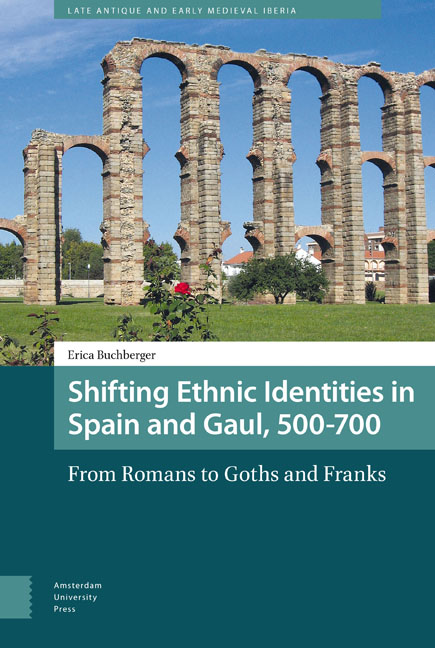Summary
Within the first few centuries after the collapse of the Western Roman Empire, the majority of those westerners once considered Romans adopted the identities of their barbarian rulers. They came to be identified as Franks or Goths or Saxons, and people called ‘Romans’ disappeared almost entirely from the written record.
How this happened is a matter of some controversy. Much progress has been made in recent years in understanding this process, but it has been hampered by a continued tendency to use terms like Goth, Roman, and Frank in a mutually exclusive manner, as if ‘Frank’ could mean only one thing at any given place and time. Thus historians have argued that, for example, the increasing use of ‘Goth’ in mid-seventh-century Spain to refer to all the king's subjects must mean that these subjects had all become ethnic Goths or, as Herwig Wolfram has suggested, that ‘Goth’ had ceased to have any ethnic meaning in favour of a wider, more inclusive political one. The reality, however, is far more complicated. A person can have multiple identities or affiliations simultaneously. Someone living in the seventh-century Visigothic kingdom could be a Roman by descent and a Goth politically, for example. When all of these aspects of identity are conflated, historians see what seem like inexplicable contradictions or paradoxes in our sources, or sometimes instantaneous or nonsensical changes to these identities. However, when the existence of multiple layers is acknowledged and examined more closely, suddenly they become both understandable and crucial witnesses to the ways these various layers could be renegotiated to effect shifts in ethnic identities over the long term.
This book is an attempt to offer a new model for discussing the multilayered nature of early medieval identities and for using the evidence of these layers to better understand the mechanisms by which such identity shifts occurred. By distinguishing between the political, religious, and descent overtones with which the ethnonyms Goth, Frank, and Roman were used in Visigothic Iberia and Merovingian Gaul, this study will shed light on the complex ways they interacted to shape contemporary society. By addressing both Iberia and Gaul, it will also illuminate the common mechanisms operating across both societies and the differences in the ways identity shifts played out based on the unique histories and concerns of each kingdom.
- Type
- Chapter
- Information
- Shifting Ethnic Identities in Spain and Gaul, 500–700From Romans to Goths and Franks, pp. 9 - 30Publisher: Amsterdam University PressPrint publication year: 2017



